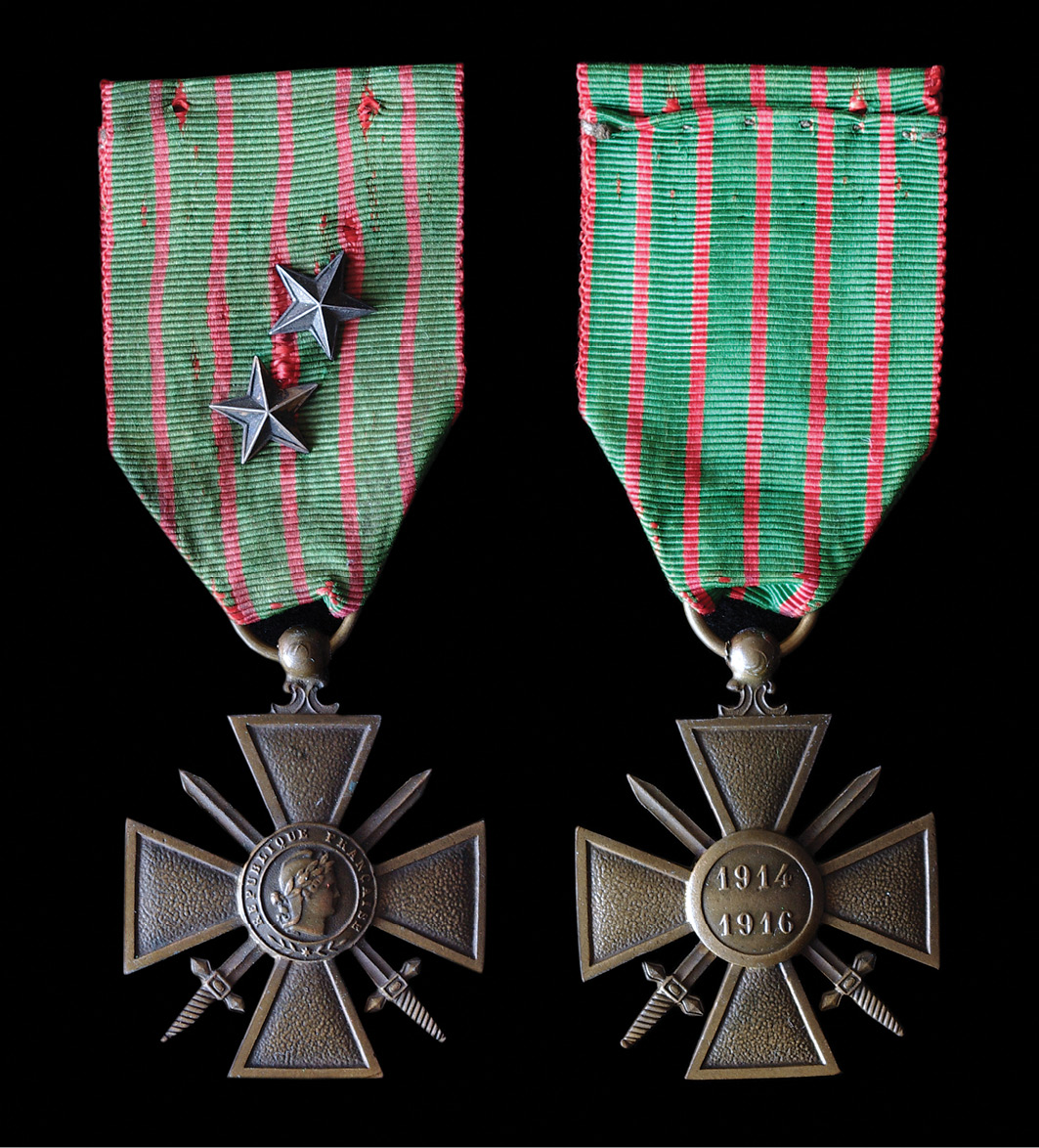46
Croix de Guerre

THE OCCUPATION OF home soil by the Germans was seen as a national disgrace by the French, and it was down to General Joffre, commander in chief of the French armies and hero of the Marne, to break through the German line and “roll it up.” He selected the great dogleg salient at Noyon as the most likely point of weakness. Here the German lines in Artois and the Champagne joined; attacking this huge bulge in the line on two fronts might just succeed. In late 1914 and 1915 Joffre devised a plan that would throw the might of the French 10th Army at the Germans in Artois, close to the city of Arras, and particularly the natural stronghold of Vimy Ridge, while committing the French 4th and 2nd Armies in the Champagne. In attacks that commenced in the winter of 1914–15 he hoped that the German front would be driven in and mobile warfare resumed.
The First Battle of Artois ended in the harsh winter of January 1915, the fighting renewed in a second battle in May. The First Battle of Champagne bogged down by March 1915—with 90,000 casualties. There would be two more offensives on these fronts in autumn. None achieved their objective of breaking the line—and the French casualties mounted to almost half a million men. These and other mass offensives would severely drain the French capacity to prosecute the war. With the bravery of the poilu never in question, the French authorities identified the need to publicly reward the acts of heroism of their soldiers. Though it had two awards—the Légion d’Honneur, granted for gallantry in war, and the Médaille Militaire, given to noncommissioned officers and men who distinguished themselves in action, as well as general officers in command of armies—with many acts of bravery falling below these levels, a new award was necessary.
The Croix de Guerre was created by a law of April 2, 1915, proposed by French deputy Émile Briant to honor the acts of his countrymen in their travails in the early offensives, creating “a new military award, a medal for the leader to decorate his bravest soldiers on the battlefield after each case.” The sculptor Paul-André Bartholomé created the medal, a bronze cross with swords, showing the effigy of the republic. The Croix reinstated an older system of mentions in dispatches, with the medal representing a mention in dispatches awarded by a commanding officer, at least a regimental commander.
Our example was awarded in 1916 and, like all of these crosses, is not named to a soldier. It bears two stars that speak of untold bravery in the face of action—bravery that we will never know. Each star and other device records the level to which the acts of bravery have been identified. Our brave poilu received recognition at both brigade (bronze star) and divisional (silver star) levels. The ultimate was a silver palm leaf. Embodied in this simple device are the fierce struggles of the French soldier on the Western Front—little enough to reward him.